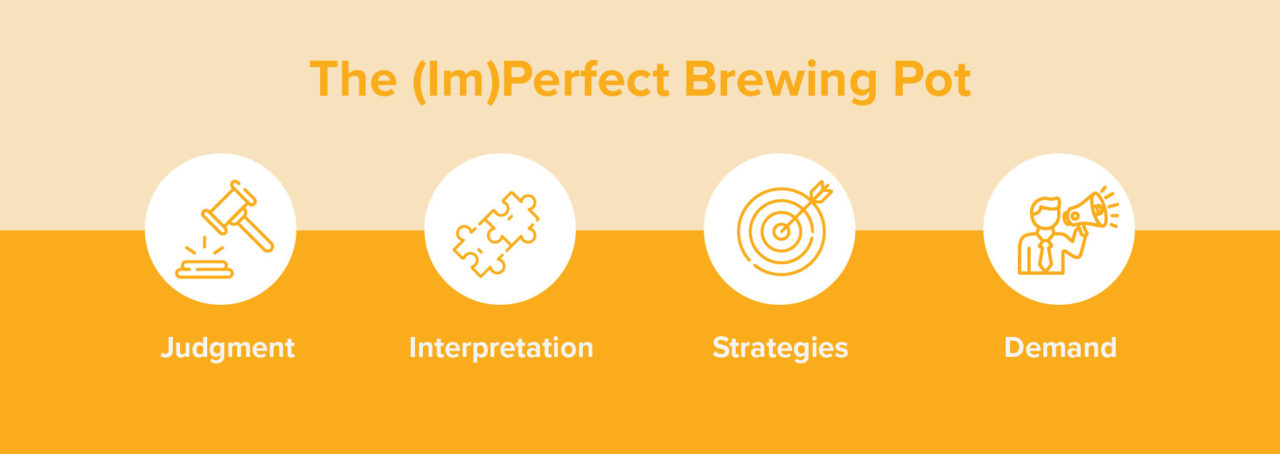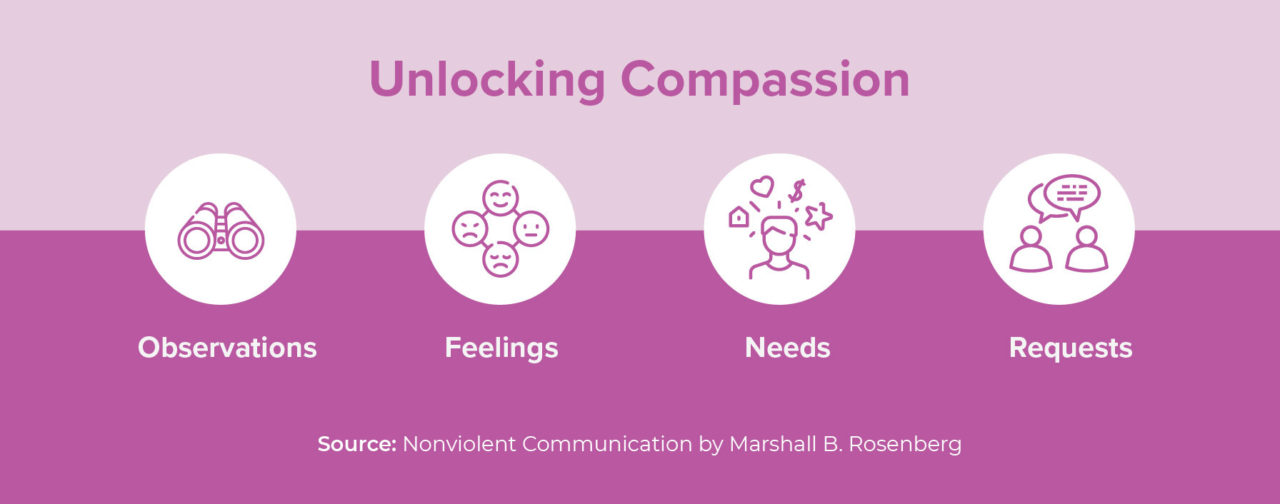Written by Simran Singh
Outwitly has set out to deliver a free webinar to our vast community of designers and researchers on various UX, service design, design research, and more topics. Today’s blog comes from Simran Singh, who hosted February’s webinar, “Embracing Conflict in Design Work.” Simran is a multi-talented service designer and researcher with an extensive educational and professional background spanning industries like e-commerce, healthcare, gaming, public service and financial services.
Simran believes that conflict in design should not be viewed as a stop sign or an indication that something is wrong. Instead, we should treat conflict like a green light – something we lean into, encourage, and meet with an open mind! The truth is that disagreement and conflict are common in the workplace, especially for designers. Our work requires challenging the status quo to design better user experiences, which often means we’re faced with pushback or even having our ideas and opinions challenged. How do we go about having conversations with our stakeholders to get alignment and achieve the end goal of designing experiences that improve the users’ lives without ruffling any feathers?
This blog will answer these questions and dive into the following:
- Exploring Conflict in UX and Service Design
- How Work Environments Affect Communication
- Tools for Embracing Conflict in Design and Research
Thanks again to Simran for bringing forward such an important topic. Follow him on LinkedIn for more thought leadership in user research and service design.
Let’s jump in!
P.S – Keep informed about upcoming learning sessions by following us on LinkedIn and joining our weekly newsletter.
Exploring Conflict in UX and Service Design
Let’s dig into exactly what conflict is and its prevalence in human-centered design and research. Simply put, conflict, in its plainest terms, is a disagreement of ideas, opinions, and actions generally resulting from different needs, drives, or wishes. These disagreements stem from differences in our own diverse and unique lived experiences. When we work in multidisciplinary teams that celebrate the diverse experiences and perspectives of the individuals we work with, it brings new ways of thinking to teams, increases the chances of finding the right solution, and strength-tests decision-making for success. When there are differences between folks, there will be conflict, so conflict within your work is generally a good sign!
In an industry like UX and service design, it is our job to open our minds and invite diverse perspectives – our designs and solutions to problems become increasingly better for it! Just like how we say “yes, and…” in brainstorming sessions, we want to approach a difference of opinion or push back on an idea with the same curiosity.
So when we’re designing and hit a spot where we don’t all agree, don’t view it as a problem. Instead, consider it a chance to dig into those differences and come out with something even better! Conflict isn’t a roadblock; it’s a helpful tool that drives us to develop new solutions that stand out.
How Can Work Environments Affect Communication?
Now that we’ve established that conflict is okay, let’s talk more about the importance of having a safe space to explore these conversations and discuss some tools that might help us along the way.
In our profession, we find ourselves working in many different industries and environments – Government, hi-tech, finance, healthcare, and more. How a company is set up affects how safely and effectively people can communicate and collaborate. At the end of the day, it’s not just the structure of the workplace that matters but how we all act within it. Let’s break down two common organizational styles, hierarchical and flat, and how fear can arise within both structures.
Hierarchical Organizations:
- Standard Decision-Making Process: Decisions are typically made top-down, following established protocols with limited input from lower-level employees.
- Chain of Command and Authority: Clear lines of authority exist, with employees reporting to supervisors who report to higher-level executives.
- Bureaucracy: Rigid structures, formal rules, and standardized procedures may slow decision-making and limit flexibility.
Some symptoms of a culture of fear within a dysfunctional hierarchical organization are that your ideas aren’t being heard, you have to do as you’re told, or you feel like you have no sense of autonomy. Follow the rules and get the job done rather than being creative, curious, and trying out new ways of doing.
Flat Organizations:
- Distributed Decision-Making: Decision-making authority is decentralized, allowing individuals or teams at various levels to make decisions.
- Same(ish) Power and Authority: Power and authority are more evenly distributed, with fewer hierarchical layers.
- Agency: Employees have greater autonomy and ownership over their work, fostering a culture of empowerment and self-direction.
In flat organizations, many individuals may initially find it a refreshing change, only to encounter feelings of not belonging. In dysfunctional flat organizations, ambiguity and the distribution of ownership can foster individual silos or excessive indecision, resulting in confusion, lack of clarity, and a loss of focus. Additionally, presenting as one’s authentic self at work might be uncomfortable, especially if you’re accustomed to working in a hierarchical structure.
It’s not that one is not better than the other. More often than not, organizations tend to be some form of a hybrid between the two, with an inclination towards either hierarchical or flat structures. We need places where everyone feels safe to say what they think without worry. When we have that within the teams and under the guidance of leaders, a supportive space tends to emerge where individuals can freely express opinions and ideas while benefiting from diverse perspectives.
How exactly can get there? By implementing tools that help us embrace conflict.
Tools for Embracing Conflict in Design and Research
In this section, we’ll take time to understand better why a culture of fear brews in teams and provide top tips for navigating conflict.
The (Im)Perfect Brewing Pot: Culture of Fear
When you’re operating within a culture of fear, there is a common pattern that tends to occur:
- Judgement: This is when we evaluate someone’s behaviour based on what has happened during a specific situation. This could be in multiple forms:
- Moralistic Judgements: Casting moral judgments suggests wrongdoing or inadequacy if actions deviate from our values. For instance: “They’re too lazy.”
- Use of Comparisons: Establishes an implicit hierarchy, fostering feelings of self-induced misery or unwarranted pride. For example: “You took too long to finish this (compared to how long it would take me).”
- Denial of Responsibility: Assigning blame to others while disregarding our own accountability for thoughts, feelings, and actions. For instance: “I lied to the client because my boss told me to.”
- Interpretation: When we engage in judgment, we focus on perceiving others and their wrongdoings against us. Such expressions are often interpreted as criticism rather than invitations for dialogue. For example: “I feel misunderstood, manipulated, betrayed, disrespected, neglected… because YOU did X thing.”
- Strategies: Due to our interpretation, we often resort to strategies aimed at fulfilling our wants, desires, or perceived entitlements. However, these strategies frequently conceal our underlying needs. For instance, while you may desire universal approval, the underlying need may be for genuine connection. Similarly, feeling deserving of external recognition for your work may mask the underlying need for acknowledgment and celebration.
- Demand: As a result of this pattern, we often resort to making demands of those around us or even ourselves. Instead of engaging in dialogue, we speak to others or at them, potentially blaming or punishing them if they fail to comply. When presented with demands, listeners perceive only two options: to submit or rebel. For instance, phrases like “You should be cleaning up after yourself” or “You are supposed to do what I ask” exemplify this dynamic.
Creating a Culture of Collaboration and Compassion
To move away from a culture of fear and judgement and toward a culture of collaboration and compassion, we can use this pattern instead for objectively describing concrete actions you or someone else is taking that is free of judgment. This framework comes from the book “Nonviolent Communication” written by Marshall B. Rosenberg.
Creating a culture of collaboration involves following a structured pattern:
- Observations:
- Describe concrete actions objectively, free of judgment, maintaining a separation between observations and evaluations.
- Specific observations are contextual and time-bound. For example, instead of saying, “They’re too lazy,” one could observe, “You have been on your phone for the last 2 hours.”
- Describing behaviour factually and neutrally serves as the foundation for constructive conversation.
- Feelings:
- After observing, identify personal feelings.
- Distinguish feelings from thoughts to avoid misinterpretation. For instance, replacing “I feel misunderstood” with “I think I am being misunderstood.”
- Use “I” statements to express feelings, such as replacing “You make me angry” with “I feel angry when I see you on your phone.”
- Embrace vulnerability to enhance self-awareness.
- Needs:
- Acknowledge the needs behind the identified feelings.
- Recognize that others’ actions may stimulate feelings but are not the root cause.
- Communicate personal needs or values without blaming or criticizing others. For example, feeling disconnected may indicate a need for connection and belonging.
- Requests:
- Make clear, specific, and concrete requests to fulfill identified needs.
- Focus on stating what is requested rather than what is not. For instance, ask, “Would you be open to finding ways to spend quality time together?”
Checking in to ensure requests are accurately heard creates a space to have a dialogue with the other person where they can express their feelings and needs. This opens channels for conversation and collaboration that fulfill everyone’s needs!
Concluding today’s discussion on embracing conflict in design work, we offer a crucial insight: Embracing our authentic selves and the clashes arising from diverse perspectives catalyze creative excellence. Rather than shying away from disagreements, we should embrace them as avenues to foster innovative design.
Conflict isn’t something to fear; it’s something to celebrate! While environmental factors play a role, our shared humanity is a constant. Effective collaboration hinges on language and communication rooted in authenticity.
In the words of Jennifer Fraser, “There are no difficult conversations. They are just conversations.” Let’s approach conflict with openness and curiosity, recognizing it as an opportunity for growth and innovation in our design endeavours.








